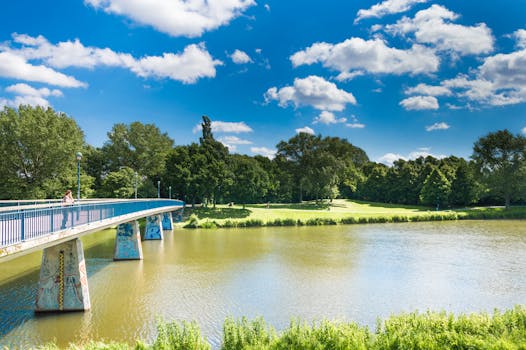
Urban Green Spaces: The Future of Outdoor Living in European Cities by 2025
Urban Green Spaces: The Future of Outdoor Living in European Cities by 2025 is a pressing concern for urban planners, policymakers, and citizens alike. As the world becomes increasingly urbanized, the importance of green spaces in cities cannot be overstated. These areas provide a range of benefits, from mitigating the urban heat island effect to promoting physical and mental well-being. In this article, we will explore the current state of urban green spaces in European cities and what the future holds for these vital areas.
Introduction to Urban Green Spaces
Urban green spaces refer to any area of vegetation in an urban environment, including parks, gardens, green roofs, and urban forests. These spaces are essential for maintaining biodiversity, improving air quality, and providing recreational areas for citizens. In European cities, urban green spaces are often limited, and their preservation and expansion are crucial for the well-being and sustainability of urban areas.
The Benefits of Urban Green Spaces
Urban green spaces offer numerous benefits, including:
- Improved air quality: Vegetation in urban areas helps to remove pollutants from the air, improving the overall quality of the air we breathe.
- Mitigation of the urban heat island effect: Green spaces can reduce the temperature in urban areas, making them more comfortable and reducing the risk of heat-related illnesses.
- Promotion of physical and mental well-being: Access to green spaces has been shown to reduce stress, improve mood, and promote physical activity.
- Support for biodiversity: Urban green spaces provide habitats for a range of plant and animal species, helping to maintain biodiversity in urban areas.
The Future of Urban Green Spaces in European Cities
By 2025, urban green spaces will play an increasingly important role in shaping the future of outdoor living in European cities. As cities continue to grow and urbanize, the need for green spaces will become more pressing. Urban planners and policymakers will need to prioritize the preservation and expansion of these areas, incorporating green infrastructure into urban planning and design.
Some of the key trends that will shape the future of urban green spaces in European cities include:
- Green roofs and walls: The use of green roofs and walls will become more widespread, providing additional green space in urban areas.
- Urban forestry initiatives: Cities will prioritize the planting and maintenance of urban trees, recognizing the importance of these areas for biodiversity and air quality.
- Community-led green space initiatives: Citizens will take an increasingly active role in the creation and maintenance of urban green spaces, promoting community engagement and ownership.
Conclusion
In conclusion, urban green spaces are essential for the well-being and sustainability of European cities. By 2025, these areas will play a crucial role in shaping the future of outdoor living in urban areas. As cities continue to grow and urbanize, it is essential that urban planners, policymakers, and citizens prioritize the preservation and expansion of urban green spaces, incorporating green infrastructure into urban planning and design.






